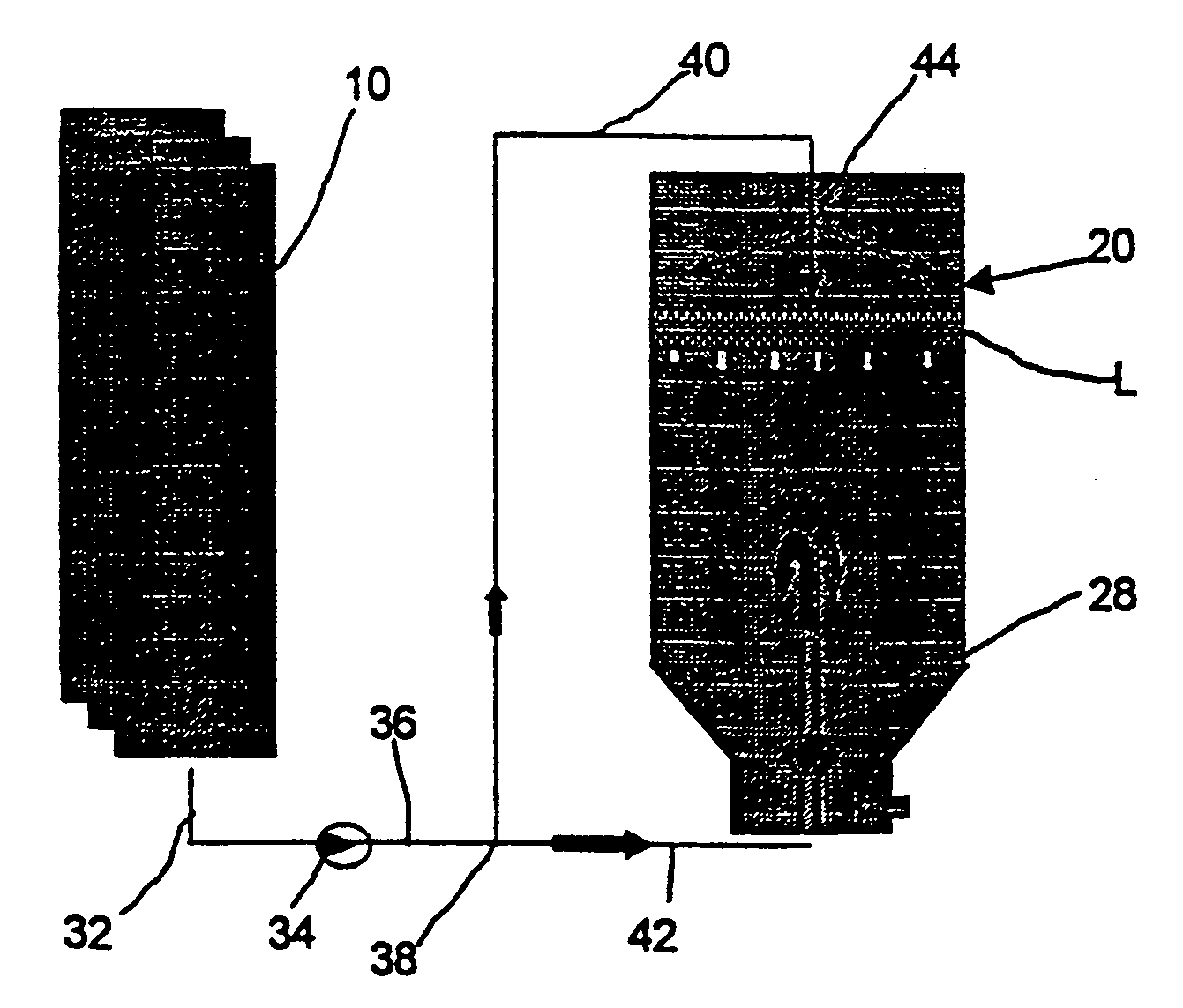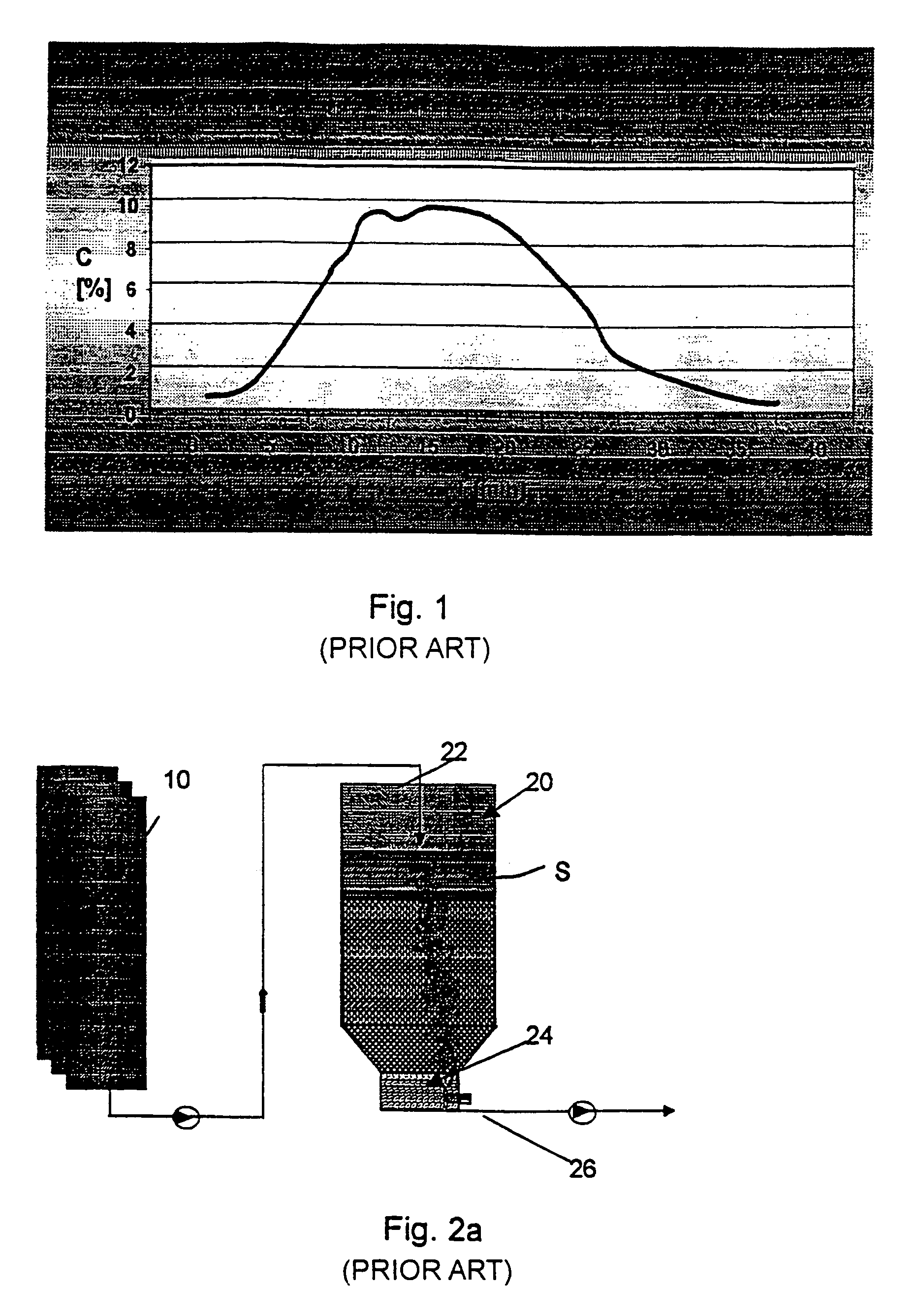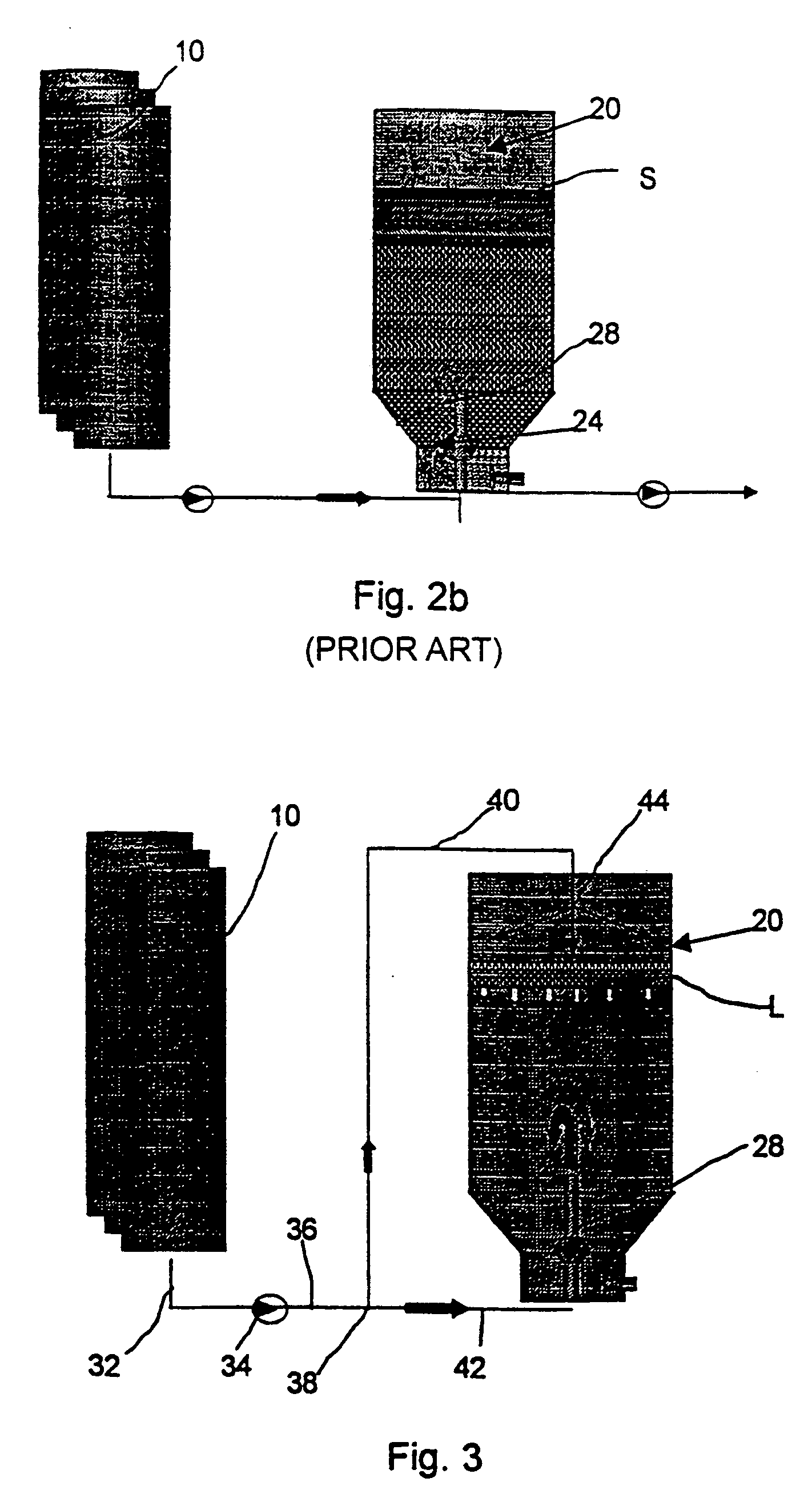Process for feeding pulp into a blow tank or storage tank
a technology applied in the direction of digesters, machine wet ends, textiles and paper, etc., can solve the problems of remarkable amount of pumping energy loss, waste of energy, and energy consumption of blowing and storage tanks
- Summary
- Abstract
- Description
- Claims
- Application Information
AI Technical Summary
Benefits of technology
Problems solved by technology
Method used
Image
Examples
Embodiment Construction
[0020]FIG. 1 illustrates the consistency variation of the pulp during the blow of one digester. As already stated, the consistency is low both in the beginning and in the end of the discharge. In about the middle stage of the blow the consistency of the pulp may be in the order of about ten percent. The time interval between two blows is about 20-40 minutes, depending on the size and number of digesters. In our studies we have noticed that said interval in the order of about half an hour is sufficient to cause the pulp on the surface in the blow tank to filtrate, or thicken, whereby a relatively solid, and continuously solidifying, pulp cake is formed onto the surface of the pulp already existing in the tank. One has to notice about the described figure that it is only an example of a batch digester and a blow as run by one operator. That is, each mill and each operator there and even each digester may produce different consistency profiles as a function of discharge time.
[0021]FIG...
PUM
| Property | Measurement | Unit |
|---|---|---|
| pressure | aaaaa | aaaaa |
| period of time | aaaaa | aaaaa |
| hydrostatic pressure | aaaaa | aaaaa |
Abstract
Description
Claims
Application Information
 Login to View More
Login to View More - R&D
- Intellectual Property
- Life Sciences
- Materials
- Tech Scout
- Unparalleled Data Quality
- Higher Quality Content
- 60% Fewer Hallucinations
Browse by: Latest US Patents, China's latest patents, Technical Efficacy Thesaurus, Application Domain, Technology Topic, Popular Technical Reports.
© 2025 PatSnap. All rights reserved.Legal|Privacy policy|Modern Slavery Act Transparency Statement|Sitemap|About US| Contact US: help@patsnap.com



